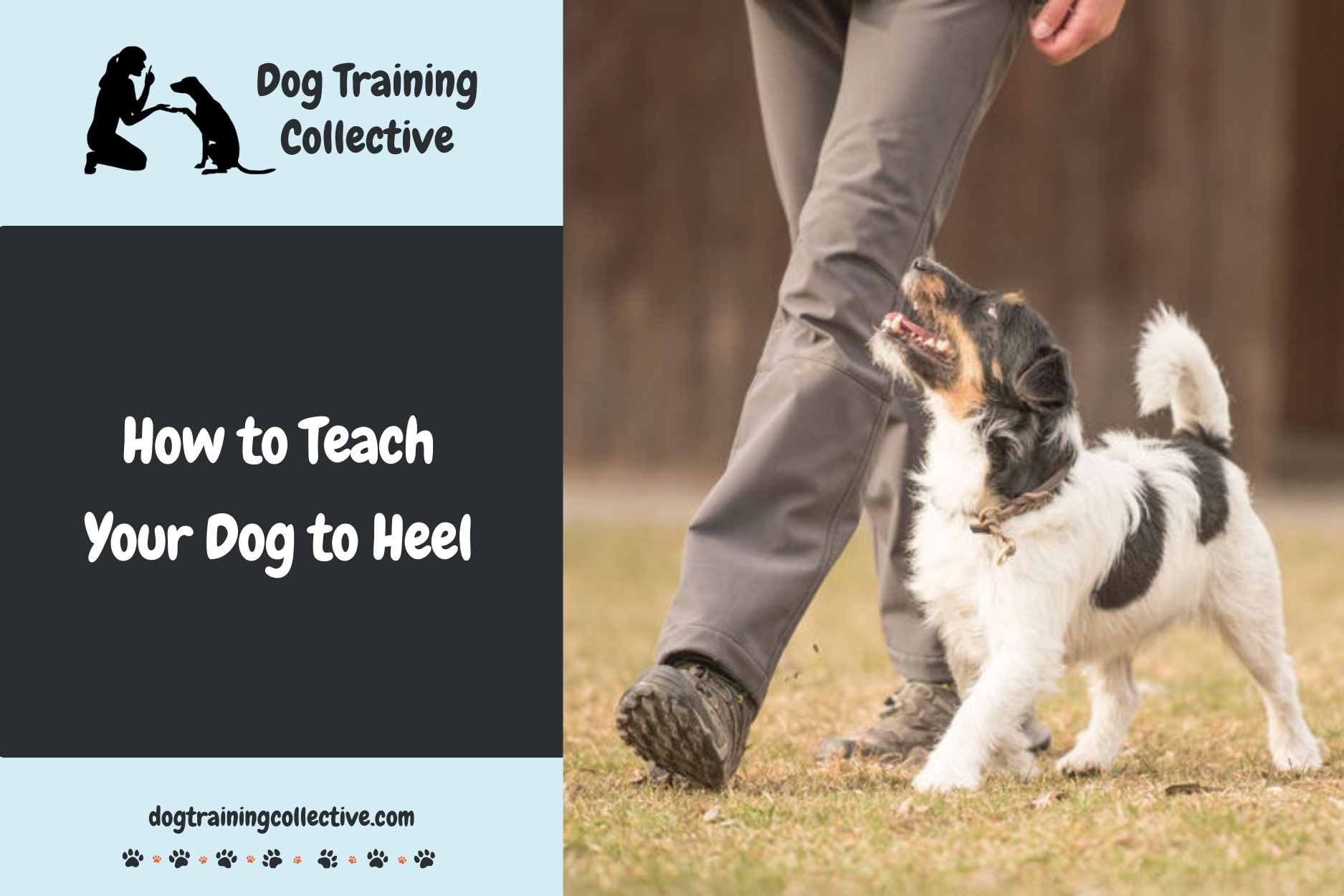Teaching your dog to heel is one of the most important commands that he will learn from you as their owner. There are several ways and methods of teaching your dog how to heel, and most trainers would agree that the luring method is one of the easiest and most fun ways to do so.
Teaching your dog to heel is not as hard as some may think, you just have to make sure that your dog already knows how to do the basics. These are: “sit”, “stay”, and “come”.
Why is the Heel Command Important?
A dog that knows how to heel will likely have well-socialized behavior in and outside of the house. The first thing it does is help your dog build a habit of focusing on you.
For one, he gets to enjoy walks anywhere from the sidewalk to the park without being easily distracted. He’d be happy to walk beside you without getting out of line. No more pulling you and leading you in all sorts of directions.
Basic commands and equipment needed
- Use verbal cues like “look”, “heel”, and “sit”. along with their corresponding hand signals.
- Use the Lure and reward method coupled with verbal praise as well as a clicker
- A leash (optional for some)
3 Stages of Teaching Your Dog to Heel
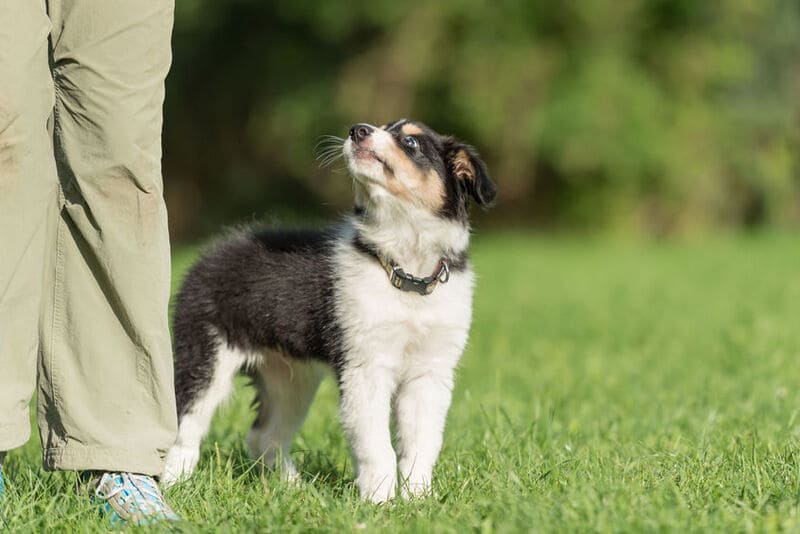
Stage 1: Working and Marking the “Heel” Position
Step 1 – Training Place and Treats
Find a good training place, preferably a quiet area with no distractions and ample space, such as an empty room, an empty patio, or a yard. Fill your treat pouch with his favorite snack and clip it to your belt for quick and easy reach.
Step 2 – Luring Your Dog
Face your dog and hold treats with both your left and right hands. Hold out the treat on the left hand right in front of your dog’s nose (don’t let him have it yet). Keep your other hand with the treat behind you in the direction of your left side.
Step 3 – Give the Verbal Cue
With the treat in your left hand, lure your dog to stand behind you by making a wide circular motion going to the left side of your back, and have him follow your hand to your right hand with the other treat in it.
Step 4 – Mark It
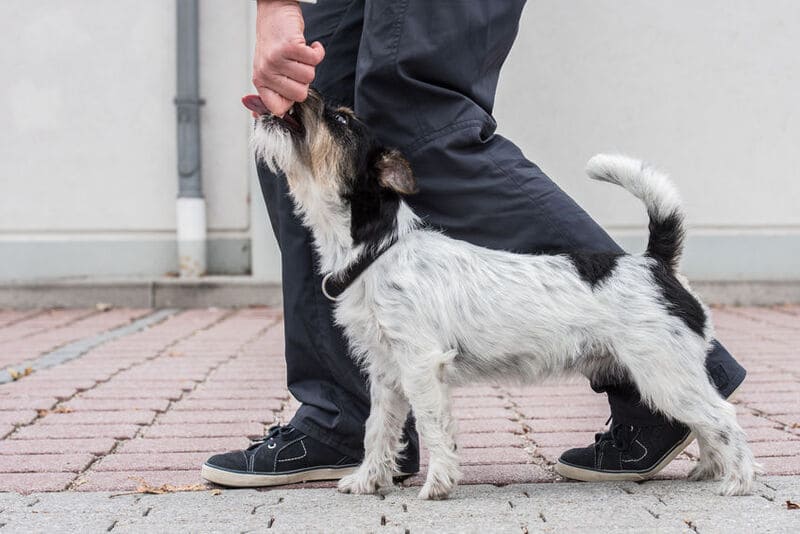
As he follows your hand and moves into heel position mark it with a “yes”, then give the treat from your other hand behind you.
Step 5 – Fade Out Treats from the Cue Hand
Do step no. 4 three to four more times depending on your dog’s progress. After which, do it again, and this time without the treat on your left hand.
Show him the empty hand, then do the same circular movement with just your finger on that left hand going to the back. You are now establishing the cue hand or the hand that does the signal without the treat.
Repeat the finger-luring action several times until your dog gets used to seeing it and following it to your left heel. Continue rewarding him with your right hand.
Step 6 – Connect Verbal Cue with Hand Signal
Next, add the verbal cue “heel” to the finger-pointing action. This way your dog will associate the command with his getting beside your left heel.
Add a few more repetitions to this exercise until such time that he can follow with just the verbal cue. You don’t have to hurry him into getting to that stage for as long as he gets used to the verbal and hand signals, that would be enough.
Stage 2: Heel Walking
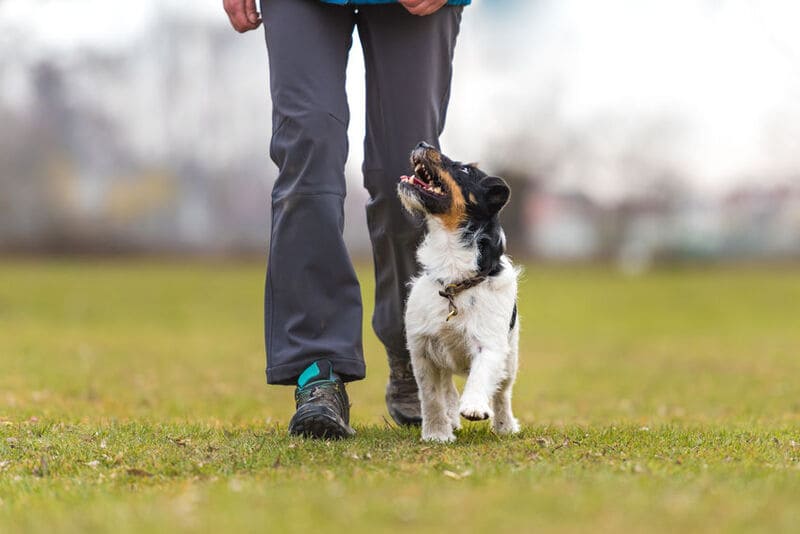
Step 7 Walking your Dog
Assuming that your dog is now correctly responding to the stationary heel command, you can now start teaching your dog to walk. Not ahead of you, not behind you, but beside you in the walking heel position.
With your dog beside you, say “Heel”. Then as he moves to your side you no longer give the treat from your right hand behind you, but instead, quickly move a step forward. And when he follows, reward him.
Right at the moment that he moves with you, quickly take two more steps forward. Note that if he moves along with you in the correct position, reward him again.
Step 8 – Increasing Your Walk at Heel Distance
With the help of rewards from both verbal praise and food, your dog is now getting accustomed to walking with you at the heel position. You can build on that by adding 2 steps at a time to the distance that you are working with for your dog.
Every time you increase the number of steps that you and your dog take, reward him. Make it your goal to be able to do a total of 12 steps in a straight line. In the meantime, try to be patient with your dog as you repeat the exercise until he begins to remember it and naturally responds to it.
Like all other tricks learned by your pet, repetition is key.
Step 9 – Using a Leash

Once you achieve walking at heel at around 12 steps, you can now try putting a leash on your dog. Walk your dog at heel within a few steps with a leash on. This way he gets used to it even before you go out on the sidewalk.
Read also: How to Train a Dog Not to Pull on the Leash | a Step-by-Step Guide
Step 10 – Turning While Heel Walking
Now that your dog already knows how to walk at heel within 12 paces in a straight line, you can start to teach him how to walk at heel in different directions. Walk 2 steps forward then turn to your left or your right. Despite the sudden change in direction, your dog will try to follow you. Reward him when he does.
While walking, continue turning left or right using 2- 4 steps before each turn. While practicing this, make sure your dog is always at heel.
By this time, your dog may already be accustomed to always being by your side whether you are moving or at a stationary position. You can also tell your dog to sit whenever you are both in a stopped position. And when he does, reward him again. You can repeat this exercise until he automatically sits when you stop walking. If he doesn’t, that will be fine for as long as he stays by your side.
At the point of stopping or making a turn, your dog should be able to remember to keep himself in the heel position. Repeating and rewarding the sit exercise long enough will eventually have your dog get used to it. Later, he may just automatically do it as you go along.
Stage 3: Training with Distractions (Proofing your dog)
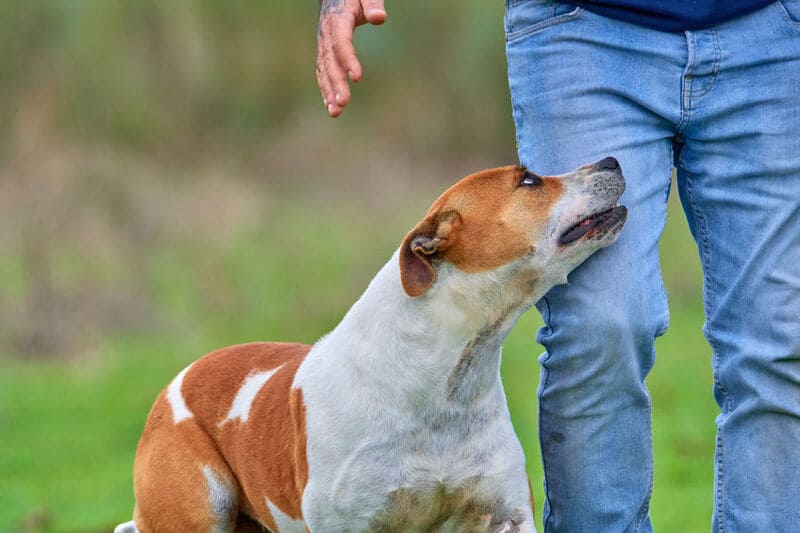
Step 11 From House to the Street
A busy street, little children playing in the park, or maybe even other dogs that are also being taken for a walk by their owners is a distraction that most untrained cannot ignore. In any case, the first time that you bring him out of the house while assuming that he already completed training inside, the next phase of this training starts with testing or proofing his skills with distractions.
Dogs are notorious for being easily carried away by sights and sounds. Proofing your pet will need some patience on your part since some dogs are more sensitive than others.
You can start him off from your hall, going to an empty yard, and from the yard to the sidewalk which most likely will end up in the park.
The Door
At this point, it may already be a good idea to put a leash on your dog. You and your dog will have a training session right off the bat just before getting outside the main door of your house.
The goal here is to train your dog and remind him that you will be in charge for the whole time that you are both outside. This exercise is critical because if your dog doesn’t understand, you’ll end up being pulled by your dog in all sorts of directions as your dog sniffs and barks at everything that he sees that moves.
Observe your dog’s behavior when he is right at the door. Does he get over-excited and suddenly lunge to get ahead and go outside? If he does, chances are he will do the same thing to distractions that await him out on the street. Calmly command him to heel, and see if he follows. If he does, then reward him with a treat.
After that, open the door and walk outside expecting your dog to walk at heel. If your dog walks obediently at heel, you are off to a good start. If not, then you will have to stay by the door and do the process over again. This is until you have established the desired behavior before going out of the house. This way, your dog will pay more attention to you.
Mark the doorway with a treat when he heels on cue, as well as before getting out of the gate through to the sidewalk. This reinforces your dog’s attention to you.
Read also: How to Train Your Dog to Stop Barking at Other Dogs
Successfully Proofing Your Dog

Assuming that your dog is already accustomed to the basics, by this time he already knows who the boss is before getting out of the house. You still need to expose him to actual distractions to see how he reacts as it will be good to know on what level he already is in the proofing stage.
Slowly introduce him to distractions on a progressive level. Don’t just suddenly bring him to a really busy place where a lot of things are happening at the same time. Start him off on a not-so-busy sidewalk near your house. Be ready to reset him when he starts to lunge and tug at the leash. Stop, heel, then reward him if he obeys. If he doesn’t, lure him with his treat and mark it again. Be careful not to give the treat until he follows your cue.
On his first day out you can take him for a walk up and down your sidewalk. The next day, you can go farther out up to two blocks. On the third day, take your dog for a walk several blocks and back.
You will have to be prepared to be patient as real-life distractions are a little bit more difficult for your dog to ignore. In situations that may be too much for him, you can adjust by taking him out of there or going back to less intense distractions.
Continue the cue and reward process as you progress with proofing. When you observe that your dog has already become fairly consistent, you can now slowly fade out the treats.
Finally, on a more advanced level, you can teach your dog to heel and heel-walk even without restraint or a leash.
Read also: How Do You Teach a Dog to Come When Called?
How Long Will the Training Last?

The overall timeframe for training your dog depends on the kind of breed that you have, and how old your dog is. Theoretically, most dog owners will go for results-based training rather than time-based training since it will depend more on how your dog will eventually behave when proofed.
On average, it takes about 5-10 minutes per session at least twice a day. It also takes about 3 weeks to a month for your dog to remember the skill. It may take months and some effort from the trainer to be able to make his dog align perfectly or increase focus to heel perfectly.
Either way, for as long as your pooch doesn’t get unreasonably distracted from outside stimuli, your dog is good to go within a month or two.
Read also: How to Teach Your Dog to Stay [Step-by-Step]
How to Use a Dog Heeling Stick
A heeling stick is used as an extension of a trainer’s hand. It functions as a visual barrier for your dog to keep him in a proper heeling position. Keep in mind that you don’t use your heeling stick as a way to punish your dog. The most that an owner can do with it is to tap his dog lightly on the flank to maintain the heel position.
- Grip the handle of your stick correctly like you would an umbrella. This way your dog won’t be startled by any unnecessary movement from the stick.
- If, while walking, your dog is not in the proper heeling position, lightly tap his hindquarter with the stick while simultaneously giving the heel command to correct his position. Your dog should be able to correct himself.
- Continue walking and deliver the correction as appropriate. No vocalization will be given during the correction.
How Soon Can I Start With a Puppy?

Puppies can be trained from 7-8 weeks of age with simple commands like “sit”, “stand”, and “down”. Their training will be a little bit heavy on the luring side because of their short attention span.
Just be sure to use both verbal and signal cues for your puppy for him to make the association between the verbal cue and the hand signal. As they begin to understand and follow the simple commands, you can slowly integrate the dog heel position.
The reason for starting early is that your dog will no longer have to unlearn wrong habits as a puppy, but instead, he will easily learn higher tasks as he gets older with obedience as his base.
Can I Still Teach an Old Dog to Heel?
On the other hand, yes you can still teach your old dog to heel. However, you will have to spend at least 3 weeks of basic obedience school to break some bad habits that he already accumulated in his early life. For some, it might take longer. Remember to gently use the leash as a way to reassert control and not to be overbearing or harsh.

